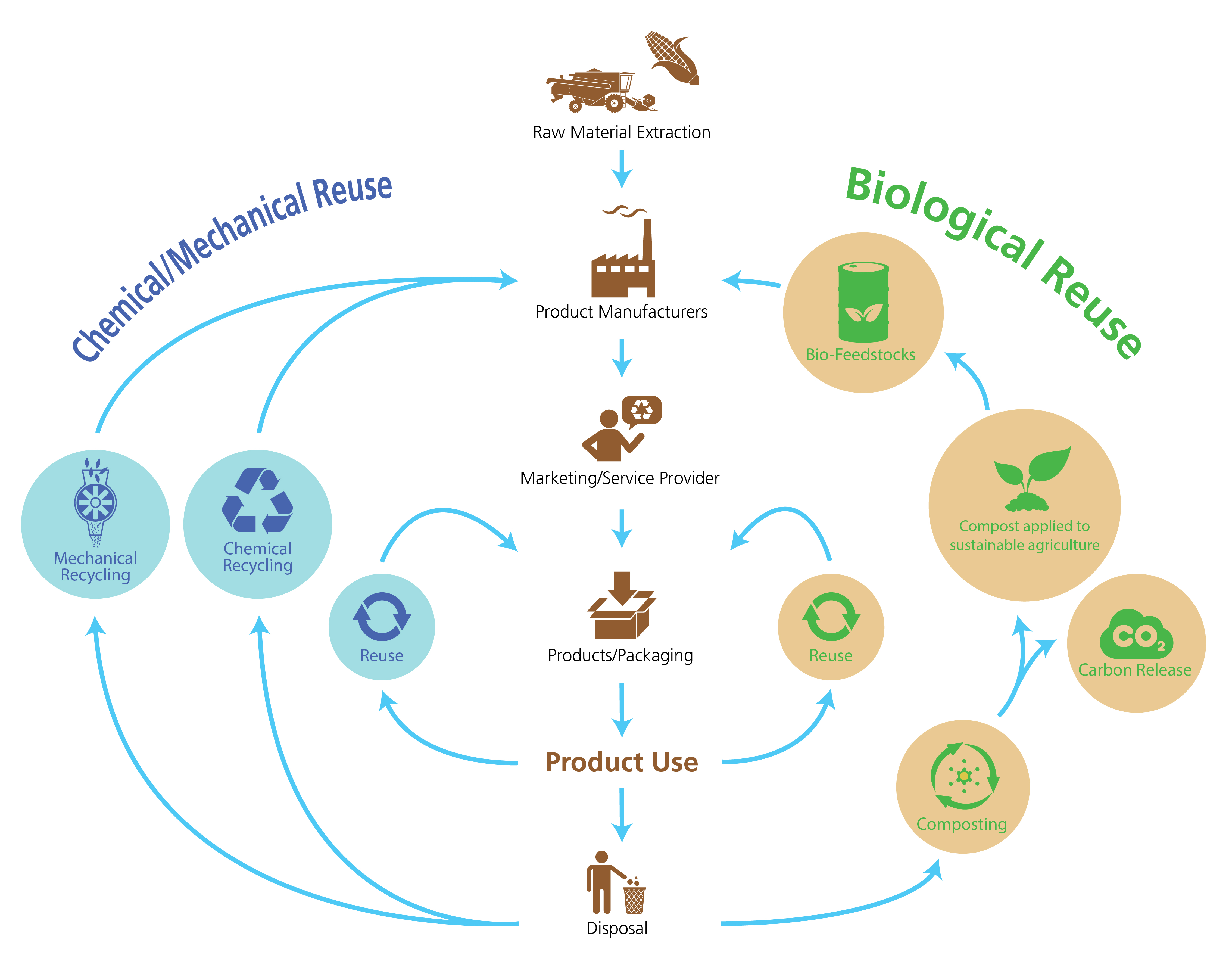https://circulesolutions.com/circular-packaging/more at their website.If individual effort is insufficient then corporate and government action must follow. Once a bulk purchase at retail anda biioplastic solution at corporate level packaging is found and implemented to a certain extent and gains acceptance then government action to require these solutions generally can be applied through legislation. Plastics could be eliminated when they become inacceptable to the masses and oil based fibers in clothing, etc. This is all a matter of awareness, creativity at household, business and corporate level and cultural momentum. This will occur first in high end markets then spread rapidly to poorer countries as many green solutions have done, showing themselves to be energy saving, waste reducing and long term sustainable solutions as opposed to our throwaway economy of plastics, fast fashion, electronic goods for fast discard.
Circular Packaging
THE FUTURE IS CIRCULAR.
In a world filled with finite resources, products and their manufacturers must adapt and embrace sustainable practices that benefit consumers and the planet. Product design and packaging offers tremendous opportunities to shift from a linear economy to a circular economy.
The Linear Economy…
Today, most products and packaging are designed to be used once and discarded. This represents enormous amounts of wasted material and pollution. As landfills reach capacity, and micro-plastics pollute the world’s most remote regions the need for change is eminent.
Circular Packaging and the Circular Economy
A “Circular “Economy” is focused on products and materials being used over and over, in a continuous loop, rather than discarded. The Ellen MacArthur Foundation was launched in 2010 to accelerate the transition to a circular economy. In a circular economy, products are reused. Products which cannot be reused are recycled by chemical or mechanical processes, or through biological processes such as composting. Circular packaging solutions incorporate the principles of the circular economy and integrate seamlessly into sustainability efforts.
Benefits of Circular Packaging
Reduction in Carbon Footprint.
Reduction in Feedstocks Derrived from Fossil Fuels.
Calculations based on replacing conventional petroleum based plastic packaging (11.5″ x 16″ 50 micron thickness), with Circule™ packaging (11.5″ x 16″ 20 micron thickness).
All Circule™ packaging is made from sustainable biobased feedstocks and is fully compostable.
Sustainability in Packaging
Is your brand leading the way?
The world’s leading brands focus on environmental stewardship and sustainability in operations and production to provide consumers better products. Products designed to be used time and time again, packaged in sustainable, recyclable, and reusable materials represent a commitment to a sustainable future.


Keine Kommentare:
Kommentar veröffentlichen